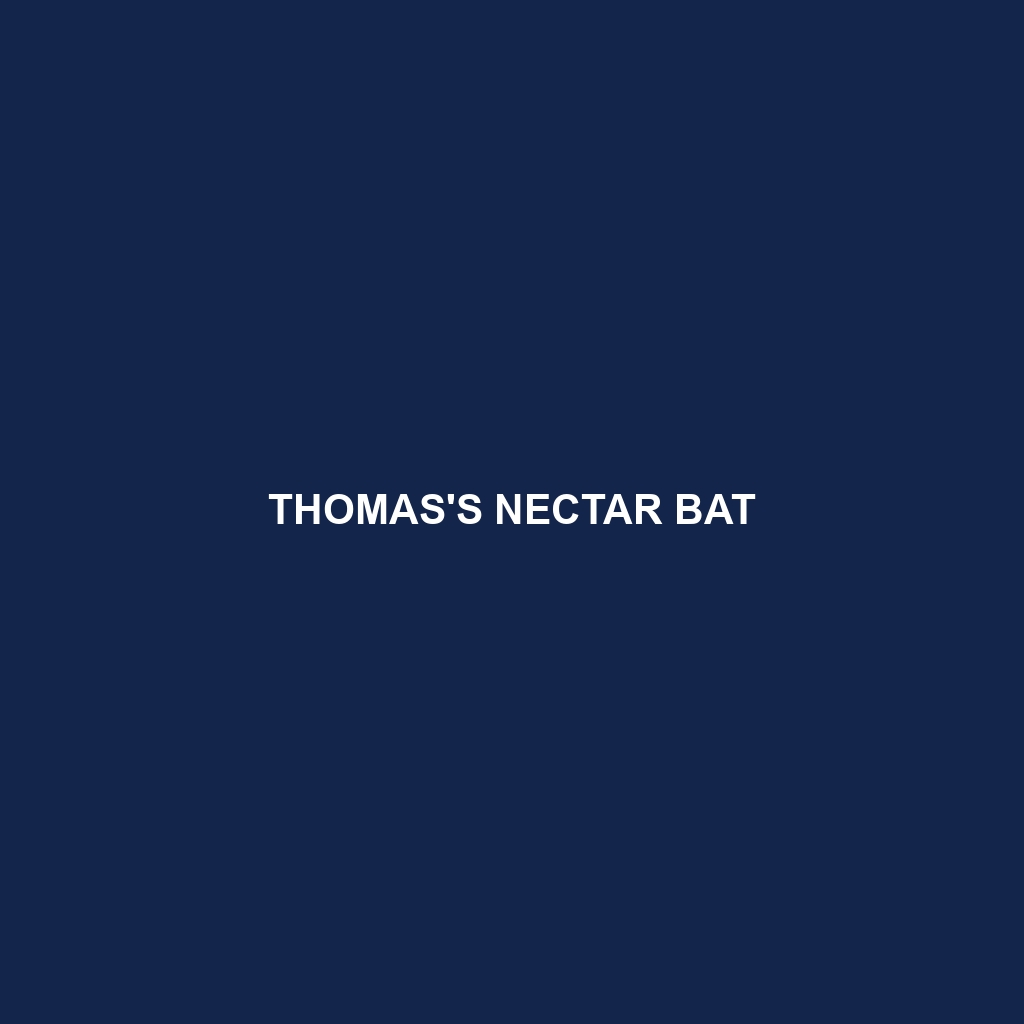Patton’s Nectar Bat ()
Common Name: Patton’s Nectar Bat
Scientific Name:
Habitat
Patton’s Nectar Bat is primarily found in the subtropical and tropical environments of Central and South America. This species thrives in regions characterized by lush flowering plants, such as tropical forests, mangroves, and coastal areas rich in nectar-producing flora. Notably, they are often spotted in hilly and mountainous terrains where their primary food sources are abundant.
Physical Characteristics
This medium-sized bat typically measures between 5 to 10 centimeters in body length, with a wingspan reaching up to 30 centimeters. Their fur is generally a soft brown to grey color, enabling camouflage amidst their natural habitats. Patton’s Nectar Bat is distinguished by its elongated snout and large eyes, adapted for exceptional vision in low light conditions. Their long tongues, capable of extending to access deep floral nectaries, are another unique feature.
Behavior
Patton’s Nectar Bat is primarily nocturnal, engaging in foraging activities under the cover of night. These bats are known for their agility in flight, allowing them to maneuver effectively among flowers. They are solitary creatures but may aggregate in small groups during feeding times. Their echolocation ability facilitates navigation and hunting in dark environments.
Diet
As nectarivores, Patton’s Nectar Bat primarily feeds on the nectar of various flowering plants, particularly species with long, tubular flowers that accommodate their extended tongues. Some of their common food sources include agaves and various species of orchids. In addition to nectar, they may consume pollen and fruits, highlighting their role in plant pollination and seed dispersal.
Reproduction
Patton’s Nectar Bat exhibits a seasonal breeding pattern, typically mating during the warmer months when food resources are abundant. Females usually give birth to a single offspring after a gestation period of approximately 90 days. Offspring are born relatively underdeveloped, relying on the mother for nourishment and protection as they gradually mature.
Conservation Status
The current conservation status of Patton’s Nectar Bat is classified as vulnerable due to habitat destruction and climate change impacts. Deforestation and urbanization pose significant threats to their natural habitats, disrupting their food sources and breeding grounds.
Interesting Facts
Patton’s Nectar Bat holds the unique distinction of having one of the longest tongues relative to body size among bat species, facilitating its specialized feeding habits. These bats are also known to play a crucial role in pollination, making them vital for the survival of many flora in their ecosystem.
Role in Ecosystem
Patton’s Nectar Bat is an essential contributor to its ecosystem, primarily through its pollination activities. As they feed on nectar, they inadvertently transport pollen between flowering plants, fostering genetic diversity and plant health. This interaction supports not only the life cycle of the plants but also sustains other species that rely on these plants for food and habitat.
